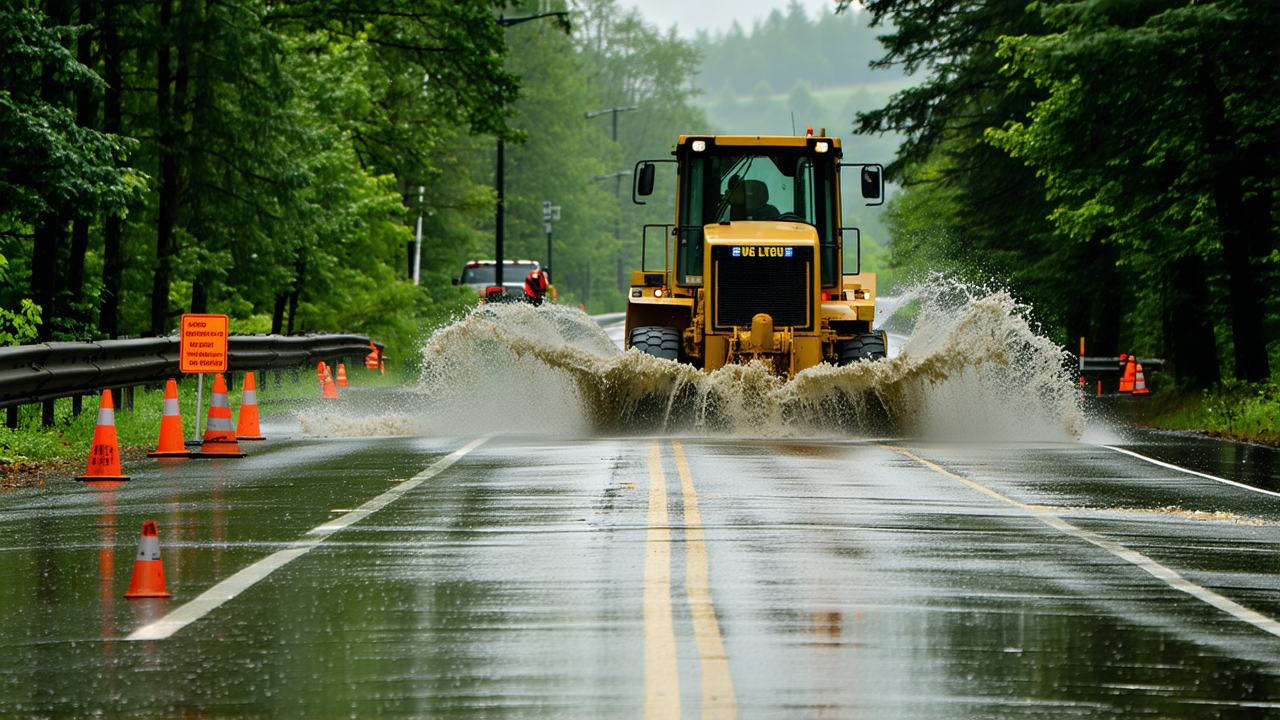Tasman Faces $25M Road Repair Bill After Three Weeks of Heavy Rain
Tasman Faces $25M Road Repair Bill After Three Weeks of Heavy Rain
Intense rainfall has left the Tasman district with an estimated $25 million in road repair costs, marking one of the most severe impacts of the recent weather events.
The Tasman district has experienced three major downpours in as many weeks, causing widespread damage to roads, parks, and reserves. Council officials have warned that the full extent of the damage is still being assessed, but preliminary estimates suggest the road repair costs could reach as high as $25 million.
Richard Kirby, the group manager for community infrastructure, said the figure is still a rough estimate. “Obviously, this is a very rough estimate and as time progresses this figure will become more accurate,” he said. Prior to the latest downpour, the council had expected the costs from the first two rain events to be around $10 million, but the third deluge has significantly increased the financial burden.
The New Zealand Transport Agency (NZTA) covers 51% of the district’s roading costs, which helps reduce the financial pressure on the council. In the past, after major storm events like Cyclone Fehi and Gita, the council received up to 71% in subsidies for road repairs. Officials are currently in discussions to see if they can secure additional funding.
“For example, with Cyclone Fehi and Gita where the costs exceeded $10 million … we did get 71% subsidy on a lot of that cost,” said transportation manager Jamie McPherson.
Over 160 road contractors are currently working across 21 crews, using 61 light vehicles, 38 heavy trucks, and 21 pieces of heavy machinery to repair urgent road damage. The damage has been extensive, with some of the most affected areas including the Great Taste Trail, a popular cycling route. Sections of the trail between Wakefield and Belgrove have been severely damaged, with some parts effectively wiped out.
“There’s sections between Wakefield and Belgrove that have basically been wiped out,” Kirby said. The council has received 100% funding for trail repairs in the past from the Ministry of Business, Innovation, and Employment, and is currently applying for additional funding.
The Moutere-Waimea Ward has been one of the hardest hit, with floodwater causing $50,000 in damage at Lord Rutherford Park alone. The park’s asphalt drive, which had only been re-paved last summer, was also lost. At the Two Rivers Walk in Brightwater, several metres of bank were lost, requiring the re-routing of up to 1.5km of the trail.
The Wakefield Recreation Reserve suffered damage to its paths, fencing, and a barbeque, while a bridge linking it to the Edward Baigent Reserve was completely lost. The Wai-iti Reserve also lost 5-6 metres of its width, along with several notable trees.
At the McKee Memorial Reserve, cliffside slips endangered a water tank at the top, which has since been drained and is being relocated. Meanwhile, a toilet is missing from the McLeans Recreation Area, with officials joking that it might be “away in the ocean somewhere.”
In Richmond, the playground at Easby Park lost all its bark for the second time in three years, prompting the council to consider relocating some equipment to avoid future damage. “We’ll be waiting for the rivers team to give us some feedback with what they want to do, but with places that are popular, we’ll try and do some temporary paths or ways through for the public because they’ll still keep pushing through where they can,” said Richard Hilton, the council’s team leader for reserves operations.
Damage to the district’s three waters infrastructure, including pumps and pipes, is estimated at up to $800,000. The full stocktake of damage to council assets, including roading, water, stop banks, and reserves, is still ongoing.
Private landowners are also facing significant costs, with some large orchards spending around $100,000 on their own recovery. Telecommunication and electricity suppliers will also have their own repair bills.
As the district continues to recover, the council is working to secure additional funding and ensure that affected areas are restored as quickly as possible. “It will keep us busy for a while,” Hilton said.
